In-the-Blink-of-An Eye We Save Humanity from Itself
“Don’t it always seem to go That you don’t know what you’ve got ‘Till it’s gone”
Joni Mitchell, Big Yellow Taxi (1970)
 I was just 14 when Big Yellow Taxi struck an emotional chord in me. Nearly a half century later, these words matter more to our own survival than any time in human history. This May, carbon emissions hit an all-time high as temperature gauges near the Arctic Circle in northwest Russia recorded the unthinkable: 87 degrees F when it’s supposed to be in the 50s! Perhaps, even worse, the Intergovernmental Science-Policy Platform on Biodiversity and Ecosystem Services released findings that 1 million species will soon go the way of the dodo, as humanity draws down more of its share of the planet’s life-giving systems. This is a crisis of immense proportions and most of humanity really won’t know what we got till it’s gone.
I was just 14 when Big Yellow Taxi struck an emotional chord in me. Nearly a half century later, these words matter more to our own survival than any time in human history. This May, carbon emissions hit an all-time high as temperature gauges near the Arctic Circle in northwest Russia recorded the unthinkable: 87 degrees F when it’s supposed to be in the 50s! Perhaps, even worse, the Intergovernmental Science-Policy Platform on Biodiversity and Ecosystem Services released findings that 1 million species will soon go the way of the dodo, as humanity draws down more of its share of the planet’s life-giving systems. This is a crisis of immense proportions and most of humanity really won’t know what we got till it’s gone.
Every single species on this planet is a freak of the Universe. We were born out of a Cosmic explosion billions of years ago triggering swirling star-dust clouds and Cosmic debris that eventually coalesced into this amazing and highly improbable (unique) blue-ball-of life.
With blatant disregard for the great Mystery in all this, we face an ultimatum.
Scientists sound the alarm on Earth Day
Originally published on April 21, 2019 in the Medford Mail Tribune
 By Dominick A. DellaSala, William J. Ripple and Franz Baumann
By Dominick A. DellaSala, William J. Ripple and Franz Baumann
Another Earth Day is here and it’s time to see how the planet’s life-support systems are doing and what it means for Oregonians.
Since clean, renewable energy solutions are becoming increasingly available, we remain hopeful. Given the risk, though, that they might not be deployed at scale, and because the planet is creeping dangerously close to a tipping point, it’s hard not to be alarmed.
For decades, scientists have been monitoring the planet’s systems like the warning lights on a car’s dashboard. We scan satellite images of humanity’s growing ecological footprint on the world’s forests, rivers, and oceans that is setting the stage for the biggest extinction event since the dinosaurs went extinct. We use thousands of weather stations to track rising global temperatures and super-computers that forecast catastrophic impacts awaiting future generations if we ignore these telltale signs.
Sounding the alarm on Earth Day
originally published April 21, 2019 at OregonLive
By Dominick A. DellaSala, William J. Ripple and Franz Baumann
Another Earth Day is here and it’s time to check on the planet, our climate, and what it means for Oregonians. While we remain hopeful that climate change is solvable if we act now, it’s hard not to be alarmed.
For decades, scientists have been monitoring the planet’s life-support systems like the warning lights on a car’s dashboard. We scan satellite images of humanity’s unprecedented ecological footprint on forests, rivers, and oceans. We use thousands of weather stations to track rising temperatures and super-computers to forecast impacts.
In 1992, we joined 1,700 scientists in issuing a warning that “a great change in our stewardship of the Earth and the life on it is required if vast human misery is to be avoided.” In 2017, more than 21,000 scientists from 184 countries issued a second warning that conditions had worsened and time was running out.
Real vs. Fake Forests
What makes a forest a forest? This simple question becomes much more complicated, depending on who you ask. Thankfully, Dr. Dominick DellaSala, President and Chief Scientist of the Geos Institute, helps us explore this question and settle the debate in a chapter on “Fake” vs “Real” forests that will be published in The World’s Biomes, scheduled to be released in 2020. Topics that will be explored include:
- Does planting trees compensate for cutting down a forest?
- Can we truly see a forest for more than just the trees?
 If a tree grows in a forest, does that make it a forest? Industry classifies forests as “an area at minimum 120 ft wide, 1 acre minimum wide, with at least 10% forest cover.” Does that sound like a forest to you?
If a tree grows in a forest, does that make it a forest? Industry classifies forests as “an area at minimum 120 ft wide, 1 acre minimum wide, with at least 10% forest cover.” Does that sound like a forest to you?
The US Forest Service is an arm of the USDA. The department of agriculture’s focus is growing crops. Stated plainly, that means the Forest Service sees trees as crops. This typically means tree plantations are planted in dense rows like corn to be thinned, sprayed with chemicals, and fertilized for the fastest growing cycle for logging and the highest “return on investment.”
The Green New Deal: Finally climate policy informed by science
The proposal from Democrats is the most comprehensive response yet to the scientists’ warnings, to implement it would be realism, not radicalism
By William J. Ripple, Dominick A. DellaSala and Franz Baumann
 Our nation has a long history of scientific innovation that has produced the computers that run our businesses, new discoveries in medicines that can extend our lives, and the rockets that take us to distant worlds in search of other life. Photo: Congresswoman Alexandria Ocasio-Cortez and senator Ed Markey present their Green New Deal resolution to reporters (Credit: 350.org)
Our nation has a long history of scientific innovation that has produced the computers that run our businesses, new discoveries in medicines that can extend our lives, and the rockets that take us to distant worlds in search of other life. Photo: Congresswoman Alexandria Ocasio-Cortez and senator Ed Markey present their Green New Deal resolution to reporters (Credit: 350.org)
In short, science is our best hope to enable informed choices about our future. Big ideas like president Roosevelt’s New Deal also gave our nation hope for reversing the downward economic spiral of the 1930s with government programmes that still benefit us today. However, when it comes to a safe climate, science and policy have operated in a vacuum.
The Green New Deal in Congress provides an opportunity for bringing both science and policy together in shaping a sustainable future for our nation that avoids a pending crisis to the planet’s life support systems if we do not act boldly and promptly.
Don’t Be Fooled by “Fake Forests”
 by Dominick A. DellaSala, Ph. D, Chief Scientist, Geos Institute
by Dominick A. DellaSala, Ph. D, Chief Scientist, Geos Institute
Originally posted on the Oregon Wild website
If a tree grows in a forest, does that make it a forest? Does planting trees compensate for cutting down a forest? How do we know we are in a forest or an unreasonable facsimile (“fake”) there of?
A new publication “The World’s Biomes” is set for release in libraries globally in 2020. It will feature my chapter on fake vs. real forests. Contact me at dominick@geosinstitute.org for an advanced copy of this chapter.
In the meantime, here’s a sneak preview of what’s inside a real vs. fake forest.
Forest Defense is Climate Defense
Dominick DellaSala’s presentation in Portland at a public event in Portland hosted by Oregon Wild.
Fire Seasons Without End (KBOO Interview)
Aired Monday November 2, 2018
The wildfires in Northern and Southern California this month are a grisly foreshadowing of a world in the fiery grip of climate chaos. It is apparent – unless you’re a climate denier – that climate change is upon us and that fire seasons without end are a stark indication of how much human activity and fossil fuels have intensified wildfire regimes as well as catastrophic weather events.
On this episode of Locus Focus, host Barbara Bernstein talks with fire and forest ecologist Dominick DellaSala, with the Geos Institute in Ashland, Oregon, about what we need to be learning from California’s escalating problems with destructive wildfires, driven by a warming, drying climate, and a massive expansion of housing in the wildland–urban interface.
Get more information or listen to the recording at the KBOO website.
Why California Can’t Chainsaw Its Way Out Of A Raging Inferno
By Peter Aldhous, BuzzFeed News Reporter (Posted on November 20, 2018, at 4:36 p.m. ET)
Some of the news photos from the devastation in Paradise, California, show a surprising scene: Green, living trees stand near homes that have been reduced to ashes.
They reveal that wildfire is a capricious enemy, but also indicate that there’s more to preventing catastrophic loss of lives and property than the prescriptions offered by the president of the United States — whose tweets and public statements suggest that what California needs to do is hoard water, cut down trees to prevent fires spreading, and get busy raking.
While thinning forests might work in some areas, studies indicate that it’s unlikely to be an effective remedy for California or the West as a whole — and it would have done little to curb the state’s most destructive recent fires.
As BuzzFeed News reported in July, California’s escalating problems with destructive wildfires have been driven by a warming, drying climate, and a massive expansion of housing in what experts call the wildland–urban interface. This has not only put people in the line of fire but has also increased the chances of a conflagration — because power lines and other human infrastructure and activity are the main sources of ignition.
Keep reading at BuzzFeedNews.com
Forest Legacies 2018 Year in Review
Enjoy reading about our accomplishments over the past year in our year in review
Latest News
Stay Updated!
Sign up to stay updated on our current initiatives and receive information you can use to build resilience in your community.

 Arsum is the Senior Adaptation and Coastal Resilience Specialist for the National Wildlife Federation’s Southcentral Region. In this role, she advances climate adaptation efforts, with a focus on nature-based approaches to address the impacts of climate change and extreme events across the Gulf region. She has authored and co-authored numerous publications on climate impact assessments and adaptation solutions. Additionally, she regularly participates in state-based coastal resilience and hazard mitigation planning across the Gulf, collaborating with regional and local stakeholders.
Arsum is the Senior Adaptation and Coastal Resilience Specialist for the National Wildlife Federation’s Southcentral Region. In this role, she advances climate adaptation efforts, with a focus on nature-based approaches to address the impacts of climate change and extreme events across the Gulf region. She has authored and co-authored numerous publications on climate impact assessments and adaptation solutions. Additionally, she regularly participates in state-based coastal resilience and hazard mitigation planning across the Gulf, collaborating with regional and local stakeholders.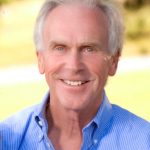 Frank is the former President of the Reinsurance Association of America. Frank currently serves on the Advisory Board of the OECD’s International Network for the Financial Management of Large-Scale Disasters, the RAND Center on Catastrophic Risk Management and Compensation, and the University of Cincinnati’s Carl H. Lindner III Center for Insurance and Risk Management Advisory Board.
Frank is the former President of the Reinsurance Association of America. Frank currently serves on the Advisory Board of the OECD’s International Network for the Financial Management of Large-Scale Disasters, the RAND Center on Catastrophic Risk Management and Compensation, and the University of Cincinnati’s Carl H. Lindner III Center for Insurance and Risk Management Advisory Board.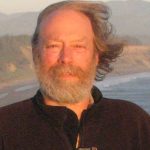 Jim is a multilingual world traveler. Based in Bavaria during the 1970s, Jim spent most of this period in India, Afghanistan and Nepal, where he founded and operated a charitable medical clinic serving Tibetan Refugees. He settled in Oregon in 1983 on a forested ranch in the Umpqua National Forest.
Jim is a multilingual world traveler. Based in Bavaria during the 1970s, Jim spent most of this period in India, Afghanistan and Nepal, where he founded and operated a charitable medical clinic serving Tibetan Refugees. He settled in Oregon in 1983 on a forested ranch in the Umpqua National Forest.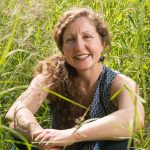 Dr. Micah Hahn is an Associate Professor of Environmental Health in the Institute for Circumpolar Health Studies at the University of Alaska-Anchorage. She received her joint PhD in Epidemiology / Environment and Resources from the University of Wisconsin-Madison and her MPH in Global Environmental Health from Emory University. Subsequently, she was a postdoctoral fellow for the CDC Climate and Health Program, and in this position worked collaboratively with the CDC Division of Vector-borne Diseases and the National Center for Atmospheric Research. Her research focuses on understanding the health impacts of climate change and working with communities to develop locally-relevant adaptation and resilience-building strategies. Dr. Hahn is also on the Management Team of the Alaska Climate Adaptation Science Center.
Dr. Micah Hahn is an Associate Professor of Environmental Health in the Institute for Circumpolar Health Studies at the University of Alaska-Anchorage. She received her joint PhD in Epidemiology / Environment and Resources from the University of Wisconsin-Madison and her MPH in Global Environmental Health from Emory University. Subsequently, she was a postdoctoral fellow for the CDC Climate and Health Program, and in this position worked collaboratively with the CDC Division of Vector-borne Diseases and the National Center for Atmospheric Research. Her research focuses on understanding the health impacts of climate change and working with communities to develop locally-relevant adaptation and resilience-building strategies. Dr. Hahn is also on the Management Team of the Alaska Climate Adaptation Science Center. Michael is a former Founding Principal of Resilient Cities Catalyst, a global non-profit helping cities and their partners tackle their toughest challenges. He is currently the Executive Director of Climate Resilience Academy at the University of Miami.
Michael is a former Founding Principal of Resilient Cities Catalyst, a global non-profit helping cities and their partners tackle their toughest challenges. He is currently the Executive Director of Climate Resilience Academy at the University of Miami.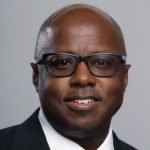 Dr. Quintus Jett is a consultant, educator, and strategist for public causes. He has a doctorate in Organizations & Management from Stanford University, and a two-decade faculty career which spans schools, departments, and programs of business, engineering, liberal studies, divinity, and public and nonprofit management. Following Hurricane Katrina in 2005, Dr. Jett launched a volunteer project in New Orleans, which enlisted residents, students from over a dozen colleges and universities, and hundreds of others to field map the city’s Gentilly district, Lower Ninth Ward, and New Orleans East. Dr. Jett is an innovator in higher education, bridging the divide between academic research and the other priorities of the modern university, including student access and diversity, community engagement, and providing foundations for life-long learning in today’s rapidly changing world.
Dr. Quintus Jett is a consultant, educator, and strategist for public causes. He has a doctorate in Organizations & Management from Stanford University, and a two-decade faculty career which spans schools, departments, and programs of business, engineering, liberal studies, divinity, and public and nonprofit management. Following Hurricane Katrina in 2005, Dr. Jett launched a volunteer project in New Orleans, which enlisted residents, students from over a dozen colleges and universities, and hundreds of others to field map the city’s Gentilly district, Lower Ninth Ward, and New Orleans East. Dr. Jett is an innovator in higher education, bridging the divide between academic research and the other priorities of the modern university, including student access and diversity, community engagement, and providing foundations for life-long learning in today’s rapidly changing world. Scott is Monfort Professor of Atmospheric Science at Colorado State University. He has written about 100 publications in the peer-reviewed climate literature, is a former editor of the Journal of Climate, and served for five years as founding Science Chair of the North American Carbon Program.
Scott is Monfort Professor of Atmospheric Science at Colorado State University. He has written about 100 publications in the peer-reviewed climate literature, is a former editor of the Journal of Climate, and served for five years as founding Science Chair of the North American Carbon Program. Linda has many years of experience in disaster preparedness and resilience. She has been an elected official on the Linn County Iowa Board of Supervisors, Chair of the Metropolitan Planning Organization, the East Central Iowa Council of Governments, the statewide Mental Health Developmental Disability and the Linn County Board of Health. Langston is a former president of the National Association of Counties (2013-2014).
Linda has many years of experience in disaster preparedness and resilience. She has been an elected official on the Linn County Iowa Board of Supervisors, Chair of the Metropolitan Planning Organization, the East Central Iowa Council of Governments, the statewide Mental Health Developmental Disability and the Linn County Board of Health. Langston is a former president of the National Association of Counties (2013-2014).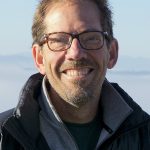 Ken works with families and organizations as a mediator, organizational consultant, trainer and facilitator. Along with his passion for helping people prepare for and reduce climate change, Ken also volunteers as a mediator through Mediation Works and is passionate about supporting youth through mentoring with Boys to Men of Southern Oregon.
Ken works with families and organizations as a mediator, organizational consultant, trainer and facilitator. Along with his passion for helping people prepare for and reduce climate change, Ken also volunteers as a mediator through Mediation Works and is passionate about supporting youth through mentoring with Boys to Men of Southern Oregon. Matthew is a retired high school teacher who was once honored as Oregon High School Social Studies Teacher of the Year. Before his teaching career he was in the restaurant business in Portland. He is also a lawyer who has been a member of the Oregon State Bar Association since 1980.
Matthew is a retired high school teacher who was once honored as Oregon High School Social Studies Teacher of the Year. Before his teaching career he was in the restaurant business in Portland. He is also a lawyer who has been a member of the Oregon State Bar Association since 1980. Andrea is the Resilience Policy Advisor for the North Carolina Office of Recovery and Resiliency. She works across state agencies and with local governments to increase the state’s resilience to the impacts of climate change.
Andrea is the Resilience Policy Advisor for the North Carolina Office of Recovery and Resiliency. She works across state agencies and with local governments to increase the state’s resilience to the impacts of climate change.